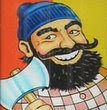Someone said, "It's not what you don't know that gets you in trouble, but it's what you do know that isn't so." We know how to revive heart attack victims..... or do we?
As recently as 1993, when Dr. Sherwin Nuland wrote the best seller "How We Die," the conventional answer was that it was his cells that had died. The patient couldn't be revived because the tissues of his brain and heart had suffered irreversible damage from lack of oxygen. This process was understood to begin after just four or five minutes. If the patient doesn't receive cardiopulmonary resuscitation within that time, and if his heart can't be restarted soon thereafter, he is unlikely to recover. That dogma went unquestioned until researchers actually looked at oxygen-starved heart cells under a microscope. What they saw amazed them, according to Dr. Lance Becker, an authority on emergency medicine at the University of Pennsylvania. "After one hour," he says, "we couldn't see evidence the cells had died. We thought we'd done something wrong." In fact, cells cut off from their blood supply died only hours later.New? Not to Billy Crystal. Again, we see that all life's important questions have already been asked and answered in The Princess Bride:
But if the cells are still alive, why can't doctors revive someone who has been dead for an hour? Because once the cells have been without oxygen for more than five minutes, they die when their oxygen supply is resumed. It was that "astounding" discovery, Becker says, that led him to his post as the director of Penn's Center for Resuscitation Science, a newly created research institute operating on one of medicine's newest frontiers: treating the dead.
Miracle Max: [Lifts and drops the arm of the dead Westley] I've seen worse.See? Asked and answered. But serious again:
Miracle Max: He probably owes you money huh? I'll ask him.
Inigo Montoya: He's dead. He can't talk.
Miracle Max: Whoo-hoo-hoo, look who knows so much. It just so happens that your friend here is only MOSTLY dead. There's a big difference between mostly dead and all dead. Mostly dead is slightly alive. With all dead, well, with all dead there's usually only one thing you can do.
Inigo Montoya: What's that?
Miracle Max: Go through his clothes and look for loose change.
Researchers are still working out how best to do this. A study at four hospitals, published last year by the University of California, showed a remarkable rate of success in treating sudden cardiac arrest with an approach that involved, among other things, a "cardioplegic" blood infusion to keep the heart in a state of suspended animation. Patients were put on a heart-lung bypass machine to maintain circulation to the brain until the heart could be safely restarted. The study involved just 34 patients, but 80 percent of them were discharged from the hospital alive. In one study of traditional methods, the figure was about 15 percent.It seems to me to be huge news that we may soon be able to save 80% of cardiac arrest cases. But that's not quite right is it? We won't soon be able to save them; we were always able to save them. We just didn't know it. What it took was a scientist with an open mind to see that what "every doctor knew" was false. Global Warmists take note; your science isn't even at the everybody-knows stage yet. And when it is, that still won't mean it's right.



0 comments:
Post a Comment